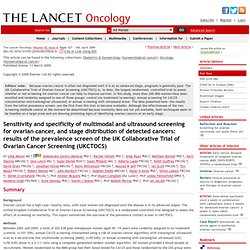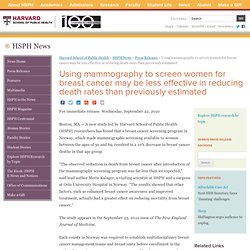

Study helps eliminate causes for joint pain linked to commonly used breast cancer drugs. Public release date: 11-Nov-2011 [ Print | E-mail Share ] [ Close Window ] Contact: Karen Malletkm463@georgetown.edu Georgetown University Medical Center Washington, D.C. – Researchers exploring why some women who take a common breast cancer drug develop serious joint pain have eliminated two possible causes: inflammatory arthritis and autoimmune disease.

Because of these findings, researchers say women should be encouraged to continue taking the medication to gain its full benefit. The study is published online Nov. 11 in the journal Breast Cancer Research and Treatment. For many post-menopausal women with breast cancer promoted by the hormone estrogen, aromatase inhibitors (AI) can dramatically reduce the risk of their cancer coming back. Forty-eight postmenopausal women with state I, II or III breast cancer treated at Georgetown Lombardi Comprehensive Cancer Center were invited to take part in the study. The authors report no related financial interests. . [ Print | E-mail. New target identified to stop the spread of breast cancer.
A new potential target to slow breast cancer tumor progression and metastasis has been identified by a team of researchers led by Dr.

Richard Kremer from the Research Institute of the McGill University Health Centre (RI-MUHC). Complications in breast cancer patients are commonly caused by the spread of the disease through metastasis to other parts of the body, most often to the bones and lungs. These findings, published this week in the Journal of Clinical Investigation (JCI), suggest that a specific protein plays a key role in the progression of the disease outside of the initial tumor area. Researchers showed that this particular target called parathyroid hormone-related protein (PTHrP), present at high levels in cancers, is involved in key stages of breast cancer initiation, progression and metastatic spread.
In order to bring this strategy one step closer to the patient, Dr. Study Details This paper was co-authored by Jiarong Li, Dao C. Polyps. Screening. Modeling Different Breast Cancer Screening Strategies. A new study which uses modeling to summarize the benefits and harms of breast cancer screening finds that regular mammography screening for women ages 50 to 74 reduces the risk of dying due to breast cancer, with a smaller benefit for women 40 to 49.

False-positives tests and overdiagnosis are of concern for all ages, although false positives are more common for women in their forties, and over-diagnosis is more of a concern for older women. The study, published November 17, 2009, in the Annals of Internal Medicine, used statistical modeling techniques to compare several breast cancer screening paradigms. The research was supported by the National Cancer Institute’s Statistical Research and Applications Branch, in the Division of Cancer Control and Population Sciences, and conducted by the Cancer Intervention and Surveillance Modeling Network (CISNET), a collaborative group that uses modeling to inform public health research and priorities.
Additional Resources: Sensitivity and specificity of multimodal and ultrasound screening for ovarian cancer, and stage distribution of detected cancers: results of the prevalence screen of the UK Collaborative Trial of Ovarian Cancer Screening (UKCTOCS) : The Lancet Oncology. Methods Participants Women were recruited through 13 regional trial centres located in National Health Service (NHS) Trusts in England, Wales, and Northern Ireland.16 All women provided written consent.

Eligibility criteria included age 50—74 years, and postmenopausal status defined as greater than and including 12 months, amenorrhoea following a natural or surgical menopause, or greater than and including 12 months of hormone-replacement therapy commenced for menopausal symptoms.17 Women were excluded if they had a history of bilateral oophorectomy, active malignancy (women with a past history of malignancy were eligible if they had no documented persistent or recurrent disease and had not received treatment for >12 months), previous history of ovarian cancer, participation in other ovarian cancer screening trials, or increased risk of familial ovarian cancer. Using Mammography to Screen Women for Breast Cancer May Be Less Effective In Reducing Death Rates Than Previously Estimated - September 22, 2010 -2010 Releases - Press Releases. For immediate release: Wednesday, September 22, 2010 Boston, MA — A new study led by Harvard School of Public Health (HSPH) researchers has found that a breast cancer screening program in Norway, which made mammographic screening available to women between the ages of 50 and 69, resulted in a 10% decrease in breast cancer deaths in that age group.

“The observed reduction in death from breast cancer after introduction of the mammography screening program was far less than we expected,” said lead author Mette Kalager, a visiting scientist at HSPH and a surgeon at Oslo University Hospital in Norway. “The results showed that other factors, such as enhanced breast cancer awareness and improved treatment, actually had a greater effect on reducing mortality from breast cancer.” The study appears in the September 23, 2010 issue of The New England Journal of Medicine. “Only one third of the mortality reduction we observed in the 20-year period was associated with the screening program.